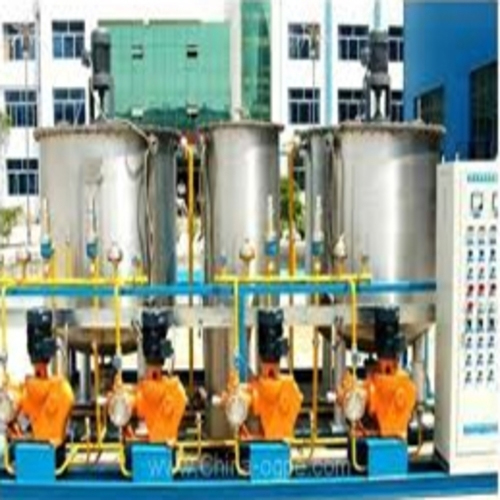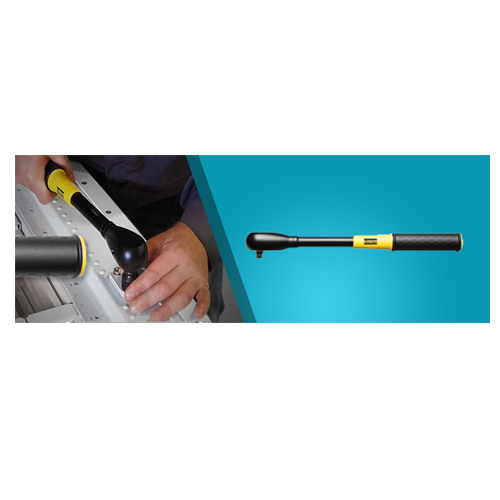Schedule a Call Back
Selecting Elbows for Pneumatic Conveying Systems
 Technical Articles
Technical Articles- Oct 03,11
The right elbow can keep a pneumatic conveying system operating at peak performance, reduce maintenance costs, and minimise material attrition and elbow wear. This article describes common elbows and criteria to consider while selecting elbows.
Several types of elbows (also called bends or sweeps) are available for pneumatic conveying lines. Each design is suited to certain applications and has its own set of advantages and disadvantages. The elbow chosen influences the performance of the pneumatic conveying system, whether it operates in dense or dilute phase and whether under pressure or vacuum.
An elbow provides a change in material-flow direction. This adds pressure losses to the system due to impact, friction and re-acceleration. As product enters the inlet of the elbow, it typically continues moving straight ahead to the first (or primary) impact zone. The product is then deflected at an angle toward the outlet of the elbow. The deflection angle is determined by the elbow design, the product's characteristics, the conveying velocity, and solids ratio (weight ratio between product and transport gas). In many designs, the product will hit one or more secondary impact zones before exiting the elbow.
Impact forces can cause severe degradation of fragile or breakage of sensitive products, generating a large amount of fines or dust, creating quality issues. Heat-sensitive products, such as plastic pellets, can overheat on the contact surface and this can result in unwanted tails or streamers on the pellet or film build-up on the surface of the elbow, which can eventually lead to product contamination. Abrasive products can cause wear, leading to worn-out elbows and system leaks causing maintenance and safety issues.
Basic Designs
Elbows fall into two main categories:
??Standard elbow
??Speciality elbow
A standard elbow is simply a straight pipe section that has been bent. The angle and centreline radius of the elbow can (at a given velocity) influence pressure loss across the elbow. Additional pressure losses are caused primarily by friction (as the product concentrates and presses against the outside wall of the elbow) and/or impact losses (as elastic products bounce from one impact zone to another).
 Traditional standard elbows are typically used for bulk materials with no physical or thermal degradation issues.
Traditional standard elbows are typically used for bulk materials with no physical or thermal degradation issues.
Speciality elbow designs provide a controlled flow pattern to create, ideally, one impact zone where product hits other product instead of sliding along the elbow wall. They are typically used when conveying fragile or temperature-sensitive products.
The material's phase and velocity changes affect the pressure loss of speciality elbows. These devices typically have higher pressure drops than standard elbows if not designed with fluidised zone at impact area.
The differences can vary significantly, depending on the product's characteristics, system operating conditions (such as conveying velocities and product-to-gas ratios ), and, of course, elbow design (the blind-tee elbow has the highest pressure loss).
Standard Elbows
Made by bending a straight pipe, standard elbows are available in either long-radius or short-radius designs. Long-radius elbows typically have a centreline radius that is eight or more times the pipe diameter whereas short-radius elbows have a centreline radius that is three to five times the diameter. Their advantages, limitations and applications are similar.
Advantages: Standard elbows are readily available in almost all materials of construction and sizes, and with a variety of different elbow angles. They have high pressure losses, and because material impacts inside wall area multiple times, have longer path to run than short radius bends. They also have low costs.
Disadvantages: Standard elbows need internal surface treatment when abrasive products are to be handled. Fragile products are subject to significant degradation due to the existence of multiple impact zones. Pellets or granular products generate high noise levels in standard elbows; and heat-sensitive products can smear and build up on the inside of the elbow. Standard elbows have low pressure losses, depending on the conveying velocity. The pressure loss across a short-radius elbow can be lowered than that of a comparable long-radius elbow. The long-radius elbow requires a large space for installation, a short-radius elbow less space. They are difficult to support on silo tops at larger heights.
Recommended applications include the handling of powders or pellets that are non-abrasive, are not fragile, and have high melting points, in either dilute-phase or dense-phase systems. Short-radius elbows are nearly always preferred over long-radius ones, unless the latter would be easier to install.
Special Short-radius Elbow
Several speciality short-radius elbows are available, primarily for abrasive products. They typically have a liner or a wear-plate insert in the primary impact area. If that wears through, only the liner or wear plate needs to be replaced, not the entire elbow. Variations with different angles are available.
Advantages: Like the standard elbows, these styles are available in almost all materials and sizes and with different angles. They require less space for installation than standard long-radius elbows. And, because only the wear plate or liner needs to be replaced in case of wear-through, replacements costs are lower.
Disadvantages: Like standard elbows, these require internal surface treatment for handling abrasive products, their multiple impact zones can cause fragile products to degrade, pellets or granular products generate high noise levels, and intense exposure of head-sensitive product to the elbow walls can cause the product to smear and build up inside the elbow. Changes in the elbow's cross-sectional area cause higher pressure losses and dead corners raise product contamination issues.
Recommended applications include the handling of powders or pellets that are moderately abrasive, have high melting points, and are not fragile. They are suitable for dilute-phase pellet and powder systems, but only for powders in dense-phase systems.
Special Wear-resistant Bend Designed with Computer-simulation of Single Particle During Movement Within
This elbow design resembles a standard short-radius elbow with a large epanded chamber between the inlet and discharge of the elbow. After the inlet, a gradually larger diameter creates an area expansion within the elbow and a deceleration zone for the incoming particles. This slowdown leads to the formation of fluidised bed in the product-to-product primary impact zone. The fluid bed constantly moves upward toward the discharge and re-acceleration zone at the elbow exit.
The larger area inside the elbow inlet creates a low pressure zone that draws the product from the primary impact zone back across the elbow's bottom toward the inlet and into the main product stream. This allows a complete clean-out that is less sensitive to the actual conveying velocities than other elbows. It is a viable with a 900 angle.
Advantages: This elbow's benefits include a defined primary product-to-product impact zone, a compact design with low space requirements, and low noise levels. Its pressure loss is same as that of standard long radius elbows. This is achieved as fluidized bed within the bend reduces the pressure drop drastically. The pressure drop was measured in R+D Department and in field operation.
The length of measuring points before solids entry and solids outlet of bend was minimum 10 times Diameter transport pipe or Bend. It is available in stainless steel, carbon steel and special alloys, and is suitable for pellet and powder transfer. The step eliminates the build-up of product within the elbow, allowing for a complete purge.
Disadvantages: The creation of the product-to-product impact zone increases with solids ratio.
Recommended applications include the handling of fluidisable powdery products and pellets that are abrasive and very abrasive, heat-sensitive and/or fragile. It can handle the dilute- or dense-phase transfer of powders, and the dilute-phase conveying of pellets.
(Exim Products, Ahmedabad Tel: 079 26461488, Fax: 91-79-26441687, Email: exim.products216@gmail.com)
Related Products

Ozone System
Omnicorp Environs & Infratech Co offers a wide range of ozone systems.

SWR ’Slipping’ Wrenches
Reliable
Trade Links offers a wide range of SWR ’slipping’ wrenches.

Gripping Systems – Rgg
Schunk Intec India Pvt Ltd offers a wide range of Gripping Systems – RGG - cleaning
device with shank interface.















